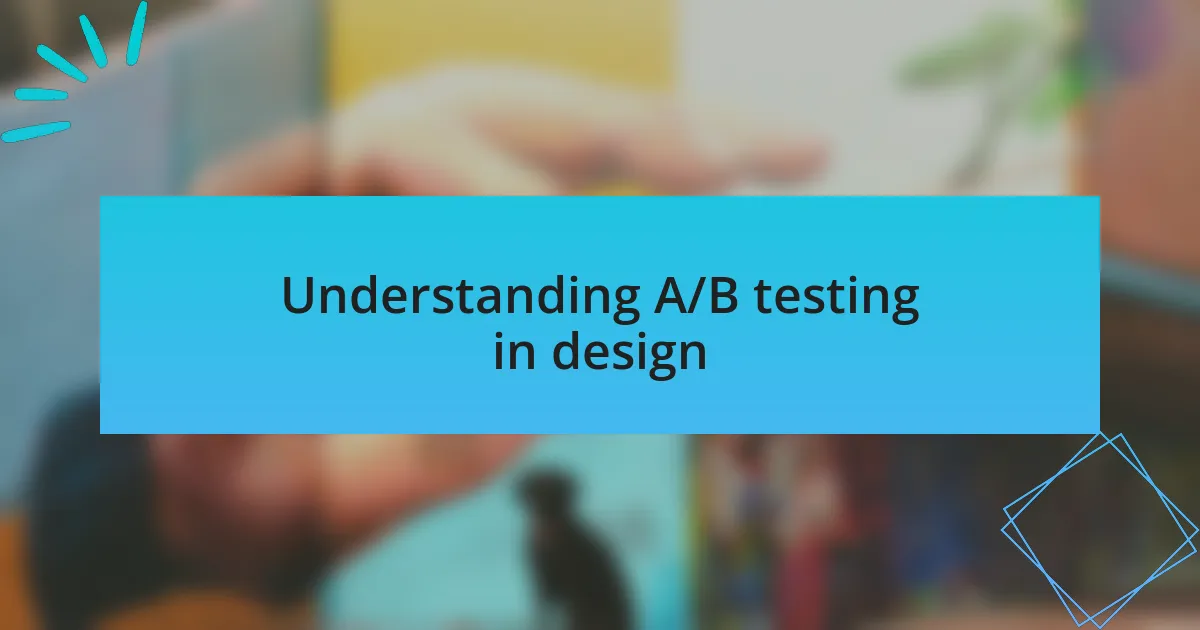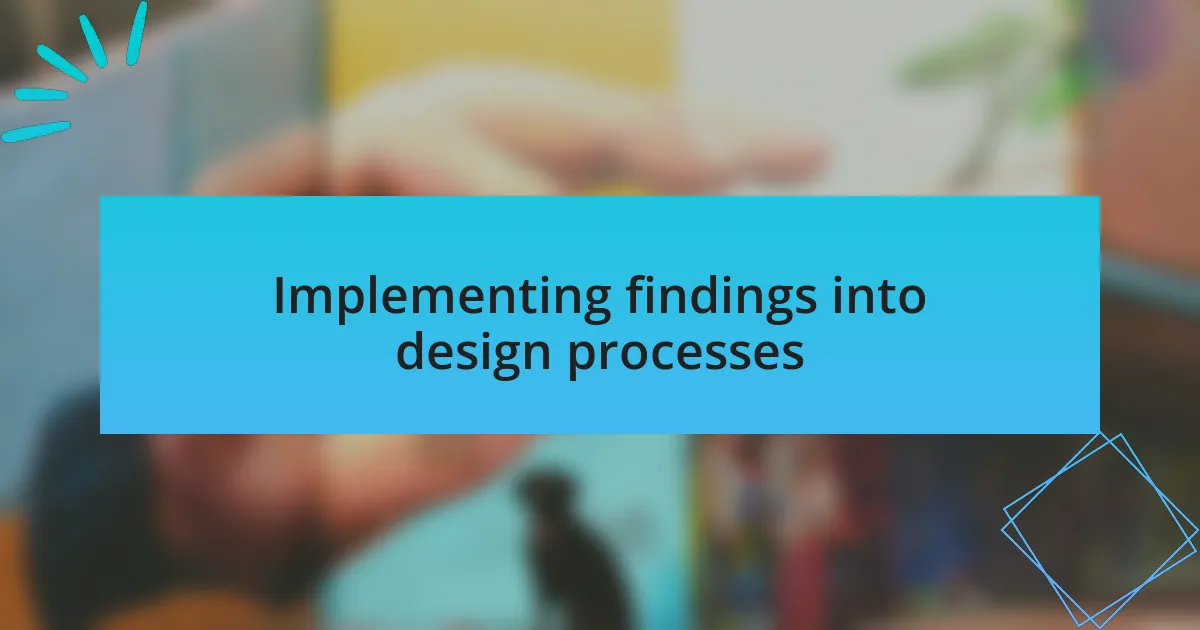Key takeaways:
- A/B testing helps determine which design variations perform better, revealing the significant impact of small changes on user engagement.
- Implementing insights from A/B tests requires rethinking design strategies, focusing not just on aesthetics but also on clear communication.
- Collaboration within teams is essential for transforming test findings into creative applications that enhance user experience.

Understanding A/B testing in design
A/B testing in design is like having a personal focus group, where you can pit two versions of a design against each other and see which one performs better. I remember firsthand when we tested two variations of a landing page; one had a bold call-to-action, while the other was more subdued. It was fascinating to see how a simple change in color could significantly influence user engagement.
Have you ever wondered how small tweaks can lead to big changes? When I conducted an A/B test on a website’s font size, I was shocked by the results. Even though it seemed trivial, the larger font led to a notable increase in the time users spent on the page. This experience taught me that design elements often have a far bigger impact than we might initially assume.
Understanding A/B testing goes beyond just choosing one design over another; it’s about developing a mindset focused on continuous improvement. I find that approaching design this way encourages a broader exploration of creativity and functionality. Each test becomes a stepping stone, providing valuable insights that not only enhance user experience but also deepen our understanding of what truly resonates with visitors.

Implementing findings into design processes
Once findings from A/B testing are in, the real work begins in transforming insights into action. I recall a project where we discovered that a more vibrant color scheme increased click-through rates dramatically. Implementing those findings meant not just changing colors, but rethinking our entire visual approach to align with user preferences. Have you ever tried to pivot a design strategy based on feedback? It can feel daunting, but it’s hugely rewarding when you see user interaction improve.
Another time, after a test revealed that users preferred more concise captions over lengthy descriptions, we adjusted our copy approach. The shift wasn’t just about fewer words; it forced us to distill the essence of what we wanted to convey. This taught me that designing isn’t just visual—it’s about communication. Engaging in this process taught me that every finding should lead to a re-evaluation of both aesthetics and functionality.
Integrating these insights into design processes should be seen as a collaborative journey. I often gather my team after analyzing results to brainstorm how we can apply our findings creatively. It’s exciting to see how a single piece of data can inspire a flurry of new ideas. By viewing each iteration as a chance to innovate, I believe we can craft user experiences that aren’t just effective but resonate deeply with our audience.